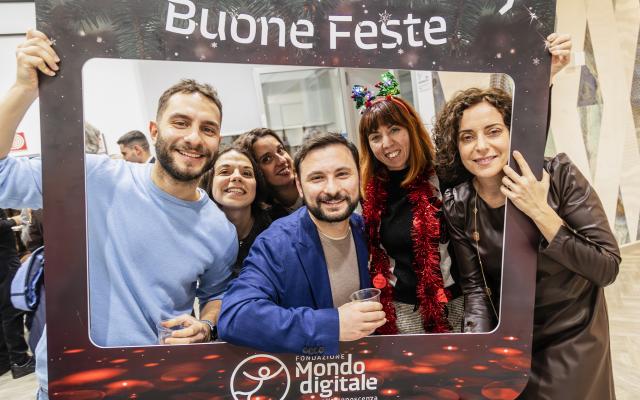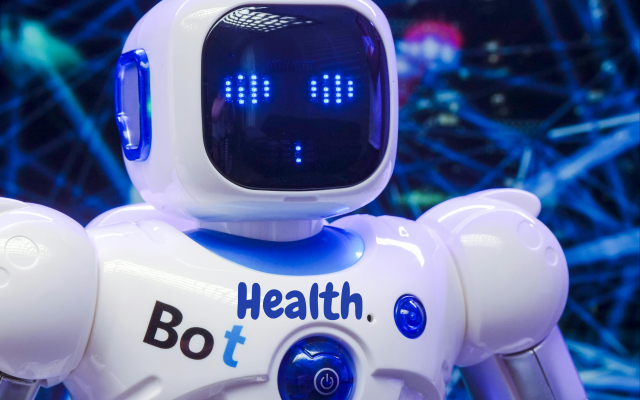RomeCup showcase area: INAIL’s innovative solutions.
The National Institute for Work Accident Insurance (INAIL) is a RomeCup 2024 partner. The Institute will have a rich showcase area stand addressing prevention and safety, with ad hoc prototypes. The use of digital technology can improve learning processes and develop new skills and, if used from a gamification perspective, it can contribute to developing awareness of workplace risks and promote a culture of health and safety for future workers and employers. In particular, the prototypes presented by INAIL include a collaborative robotic system, drone reconnaissance systems for contaminated sites, an exoskeleton for simulated dynamics and haptic interface, and Hesiod. There will also be interactive experiences with the "Gioca con Sicuri diventa!" workshop.
“It is in INAIL’s DNA to place the worker at the centre of its commitment. As a research body, we aim to create sustainable and effective innovative products and solutions that can make workplaces healthier and safer, and our companies more competitive. We have implemented many actions to strengthen technological transfer and to shorten the distance between research and business (i.e. to ensure that the solutions studied in laboratories can truly have a business and social impact. Extended partnerships, competence centres, innovation ecosystems are some examples of how we are collaborating with institutions, universities, businesses, and social forces for the digital and technological transition of the country, whilst always focusing on individuals," comments Edoardo Gambacciani, Central Research Director at INAIL. “The use of AI and human-machine interaction are two fundamental drivers of the Institute's research activity. INAIL has been studying the opportunities offered by new enabling technology in the working world and we consider all work-related risks, for example, to process automation. We therefore are keen to participate in important opportunities for discussion on these issues, and to consolidate INAIL’s role as guarantor of responsible innovation, oriented towards the protection of workers."
But what is INAIL’s contribution to RomeCup 2024? Onelia Onorati asked Sara Stabile, a researcher at the Department of Medicine, Epidemiology, Occupational and Environmental Hygiene, and Giuseppe Augugliaro, a technologist at the Department of Technological Innovation and Safety of Plants, Products, and Anthropic Settlements.
Sara Stabile’s Department will present the experiential laboratory for students "Gioca con Sicuri si diventa!" at RomeCup. The lab is based on a serious game produced by a research project financed by INAIL as part of BRiC 2016 (Research call for collaboration) by the Department of Medicine, Epidemiology, Occupational and Environmental Hygiene at INAIL and the Department of Political and Social Sciences at the University of Bologna in collaboration with three regional health authorities: Emilia Romagna, Marche, and Lazio. The objective of the project was to experiment a co-construction model for training activities on health and safety at work for students on PCTO courses (last three years of upper secondary school). It was a participatory process that actively involved students, teachers, researchers, local health authority technicians, experts, and software developers in all phases of the project, in the analysis of training needs, and in the design, development, and testing of the game and its educational contents. During PCTOs, students work in new contexts, different from their school ones, which could expose them to risks for their health and safety. Therefore, they are treated as workers and must be guaranteed adequate protection through training and, where required, health surveillance and provision of personal protective equipment (PPE). Work-safety legislation, also with a view to lifelong learning, is moving towards the acquisition by young workers of basic knowledge and risk prevention at school and university, before even beginning their working careers. This video game is a learning and support tool for specific mandatory training for workers to develop risk awareness and promote a culture of health and safety at work in future workers and employers.
Sicuri si diventa is a management video game, which is set in a 3D scenario, viewed from above, that reproduces three production environments (construction, agriculture, and manufacturing) in a simplified way. These are three sectors with a medium-high accident risk. It is based on the responsibility of the player, who impersonates the junior safety manager and proposes a challenge in which scores are obtained based on the ability to protect workers by securing workstations, purchasing the right PPE, and avoiding accidents. Players must develop their companies starting by completing levels that become increasingly complex. The aim is to highlight how the application of work safety rules is not a waste of time or profit, but rather by protecting workers it promotes the efficiency and growth of the company and the well-being of the workers. The video game, which can be used in cooperative or competitive mode, played individually or in teams, at home, at school, alone, or with the teacher, is available in a desktop version, to be played on-line by connecting to the project website: https://site.unibo.it/sicuri-si-diventa/it/gioca
The technologist Giuseppe Augugliaro describes the three projects that will be presented by the Department of Technological Innovation and Safety of Plants, Products and Anthropic Settlements:
- SIDE - was conceived based on INAIL's need to identify innovative ways to train workers and increase the level of safety, reducing accidents. SIDE has made it possible to develop an exoskeleton for simulated dynamics and a haptic interface with virtual reality. In practice, it is a wearable robot capable of providing users with the sensation of muscular effort generated by the objects it manipulates in a virtual environment. The project was conceived by DIT, and developed, through a BRIC project, with a consortium of universities for Sapienza University of Rome. Imagine wearing visors, the wearable robot (a backpack to which a haptic robotic limb is connected) and being in a confined space in virtual reality. If you are in front of a door and touch the handle with SIDE you need to apply force with your arm to overcome the resistance of the handle and then push it open. The same thing happens if it is necessary to use a fire extinguisher in a virtual environment, for which it will be necessary to bear the weight of the extinguisher and apply force to activate it. The scenario reproduced in virtual reality is a hostile environment (i.e., a confined and/or possibly polluted area) in which the worker has to carry out a task with a limited amount of time - or quantity of oxygen. Motor task skills acquired previously in VR provide a fundamental difference in terms of safety.
- Collaborative Space - The collaborative space demonstrator is a project created to highlight and test risks associated with the perception of the so-called "collaborative" space in which a specifically designed and programmed robot carries out activities in close collaboration with humans. The system consists of a 6-axis robotic manipulator with gripper installed on a non-motorized mobile base. The mobile base effectively constitutes the work surface. The demo will employ the power and force safety function (i.e. the machine stops if the force or pressure values resulting from any type of contact and identified by the ISO/TS 15066 standard are exceeded). The arm is housed in a clearly demarcated area of the stand and the safe space intended for the operator will be highlighted on the ground. Programmed to carry out “pick up - move – deposit” operations on three different trajectories, the demo repeats the operation continuously. The correct trajectory is the one in which the vertical projection of the robotic system falls within the plane of the mobile platform, without invading the space occupied by the operator. Visitors will be given a questionnaire on the perception of risk associated with interaction with a collaborative robotic system to understand the level of awareness of dangers and consequent risks.
- Drone reconnaissance systems for contaminated sites – These drones can map contaminated areas in real-time, reducing dangers for humans, and speeding up operations. INAIL has acquired a drone with a 9 kg load capacity and 1.8 metre opening that allows the installation of monitoring instruments, sensors, and tele/thermal cameras for mapping. Used primarily in large areas, these drones are able to detect harmful gases, monitor temperatures and, in the future, identify hazardous materials with a hyper-spectral camera or radiometric thermal imaging camera. This innovative technology supports environmental surveillance, reducing workers' direct contact with pollutants and physical agents. The effective use of drones requires interdisciplinary skills and a deep understanding of regulations, combining engineering and environmental chemistry, to ensure worker safety and environmental protection. The system reveals, through live simulations and immersive reality systems, reconnaissance on contaminated sites, recognition of contaminated areas, and atmospheric monitoring. Visitors will be able to see the images of the simulations carried out in real-time on the monitor, in the visible and infrared fields, and will be able to enjoy an immersive experience thanks to the virtual reality helmet with which the drone is equipped.
Project “Sicuri si diventa”:
Project website
Video game: https://site.unibo.it/sicuri-si-diventa/it/gioca



